Inspiring Story of the Multifaceted Artist
Warren Hunter is a multifaceted artist and dedicated teacher whose life and work have inspired many. With a unique artistic vision and a passion for nurturing young minds, Warren has established himself as a prolific creator and a respected mentor. Dive into the story of an individual whose dedication to his craft and his students continues to leave an indelible mark on the world of art.
Awards
Warren Hunter’s remarkable career has been adorned with numerous prestigious awards and accolades, reflecting his profound impact on the art world and the field of education.
- 1929: The Harper Herald, where Warren’s early work was featured, received the Best Weekly Newspaper in the State of Texas award, the Annual Belo Cup from the A. M. Belo Corporation, and recognition for the best advertisements typographically.
- 1938: Hunter was honored with the Chicago Society of Etchers’ prize for his evocative piece, "Phantom of the Swamp."
- 1950: Marking a significant milestone in his career, Warren became the first Dean of the San Antonio Art Institute, solidifying his influence in art education.
- 1957: He earned the Chicago Book Clinic Award for his work on "The Esther Thomas Hoblitzelle Collection of English Silver," showcasing his art and book design expertise.
- 1964: Hunter was awarded the Southern Book Publishers’ Award for his contributions to "Two Silly Kings," demonstrating his versatility and creative prowess.
- 1972: His distinguished career was capped with the American Artists Professional League’s Distinguished Service Award, honoring his lifelong dedication to the arts.
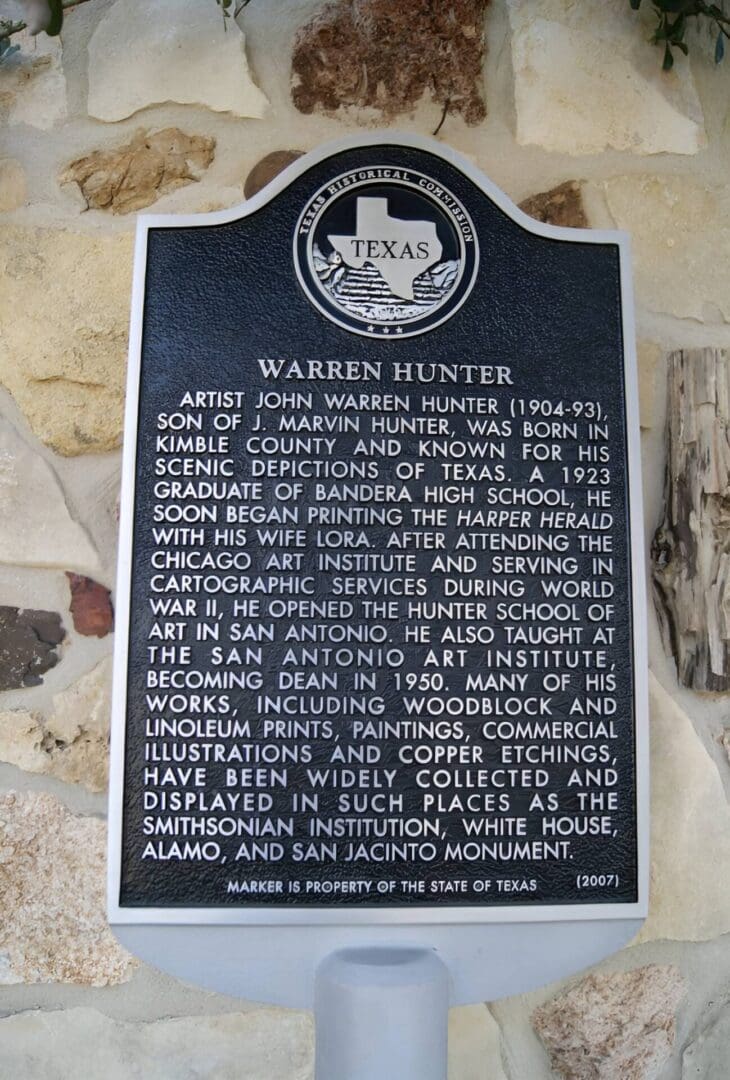
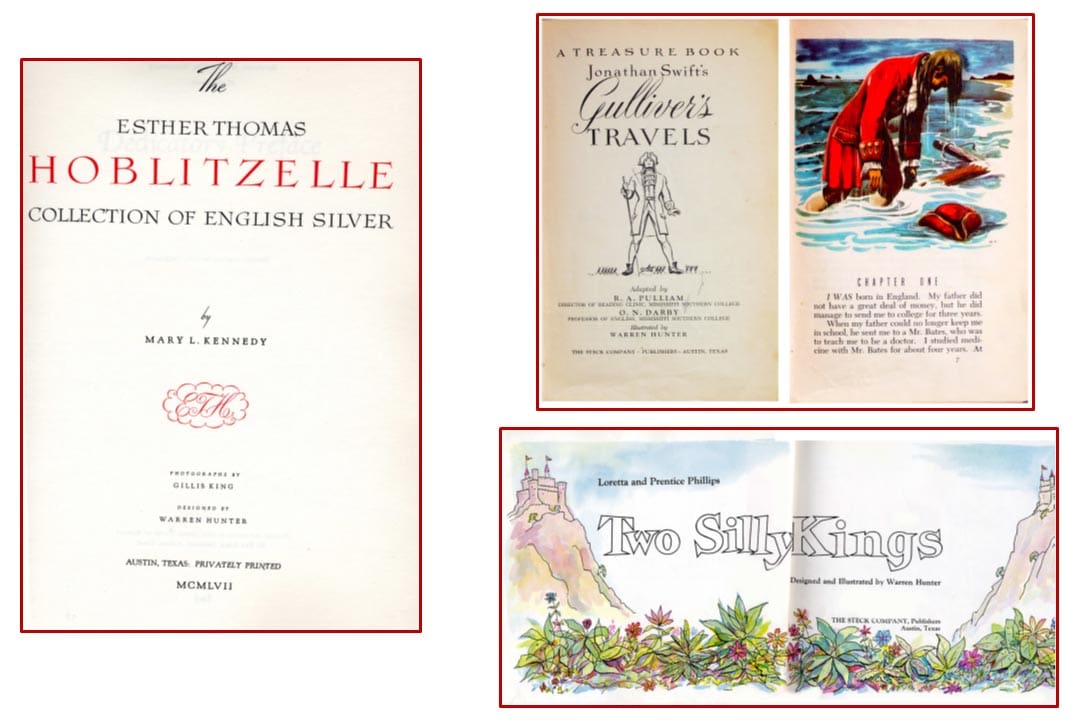
Books Illustrated
Warren Hunter's exceptional talent as an illustrator has brought to life numerous literary works across various genres. His illustrations and designs have enriched the pages of many notable publications, each showcasing his distinctive artistic style.
- The Geography of Texas by William T. Chambers (1946): Illustrated by Warren Hunter, this book offers a comprehensive look at Texas's geography, enhanced by Hunter's detailed visual depictions. It was published by Steck Co. in Austin, Texas.
- Our Texas by Frances Donecker (1948): Hunter’s illustrations beautifully complement this exploration of Texas, bringing a vivid visual element to Donecker's text. Published by Steck Co. in Austin, Texas.
- Our Mississippi by Pearl Vivian Guyton (1951): Hunter's illustrations enrich this book, providing a visual journey through Mississippi. Published by Steck Co. in Austin, Texas.
- Texas Missions and Landmarks by Jack Harmon (1978): This book, featuring etchings by Warren Hunter, captures the historic beauty of Texas's missions and landmarks. It was published by The University of Texas Press for the Institute of Texas Cultures.
- The Esther Thomas Hoblitzelle Collection of English Silver by Karl Hoblitzelle, Esther (Thomas) Hoblitzelle, and Mary L. Kennedy (1957): Designed by Warren Hunter, showcases an exquisite English silver collection. Published by Steck Co. in Austin, Texas.
- The Album of Gunfighters by J. Marvin Hunter and Noah H. Rose (1951): Decorated and designed by Warren Hunter, this book delves into the lives of infamous gunfighters. It was published by Hunter and Rose Publishers in Bandera, Texas.
- The Amazing Land of Wew by John G. Kaufer (1954): Hunter’s illustrations bring the fantastical world of Wew to life. Published by Steck Co. in Austin, Texas.
- The Story of Florida by Robert W. Patrick, Eleanor B. Patrick, and Hester G. Fisackerly (1957): Illustrated by Warren Hunter, this book narrates the rich history of Florida with vivid visuals. Published by Steck Co. in Austin, Texas.
- Two Silly Kings by Loretta and Prentice Phillips (1964): Designed and illustrated by Warren Hunter, this book combines whimsical storytelling with captivating illustrations. It was published by Steck Co. in Austin, Texas.
- Empire Builders of Georgia by Ruth Elgin Suddeth (1951): Hunter’s illustrations add depth to the stories of Georgia’s prominent figures. Published by Steck Co. in Austin, Texas.
- Tales of the Western World by Ruth Elgin Suddeth and Constance Gay Morenus (1953): Illustrated by Warren Hunter, this collection of tales is brought to life with his dynamic artwork and published by Steck Co. in Austin, Texas.
- Jonathan Swift's Gulliver's Travels, adapted by Roy Avron Pulliam and O.N. Darby (1949): Hunter's illustrations provide a fresh visual interpretation of this classic tale. Part of the Treasure Book Series, published by Steck Co. in Austin, Texas.
- San Antonio Telephone Book Cover (1978): Warren Hunter designed the cover, contributing his artistic expertise to a practical publication used by many.
Hunter School of Art
810 Brooklyn Street, San Antonio, TX
Warren Hunter is fondly remembered as an exceptional teacher at the Hunter School of Art, where he guided both aspiring professional artists and those seeking richer self-expression. Renowned for his emphasis on fundamental skills and personalized guidance, Hunter believed that motivation and relentless practice were far more important than innate talent, which he famously dismissed as not worth “two hoots.” His dedication to nurturing students’ potential through hard work and perseverance left a lasting impact, inspiring many to achieve their artistic goals.
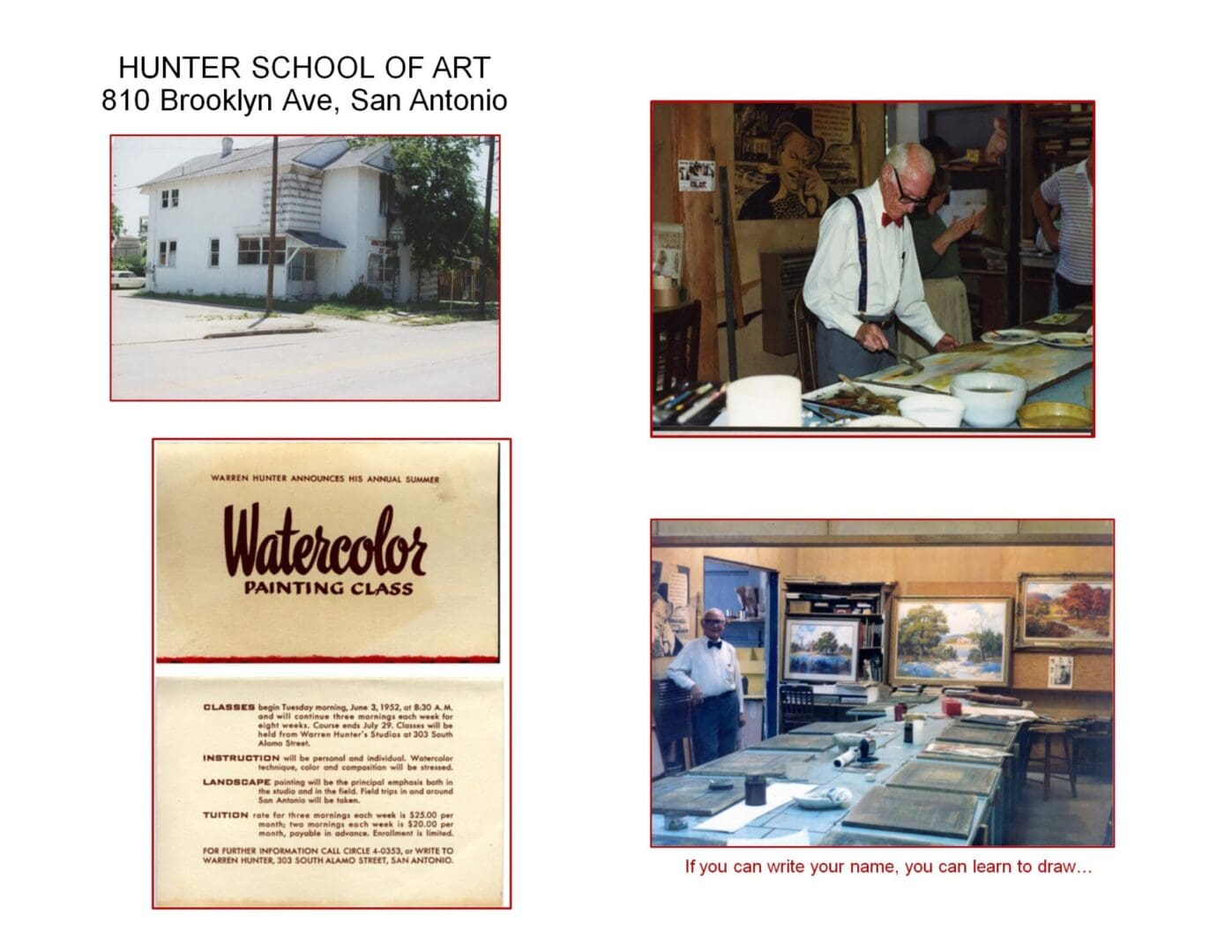
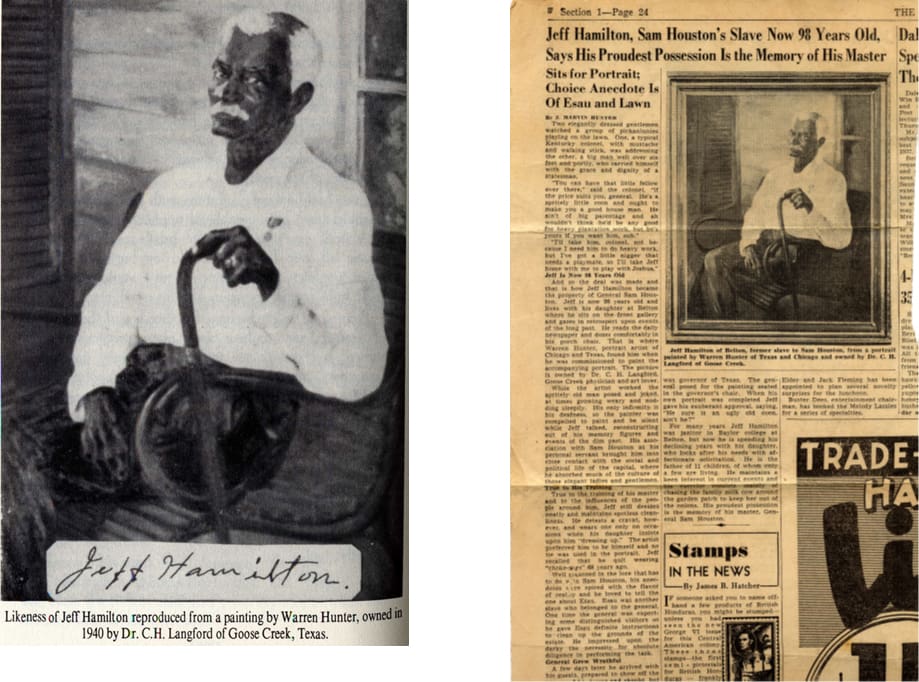
The Chicago Years
The Warren Hunter family lived in Chicago for four years, returning to Bandera for summers and Christmas. Hunter studied commercial art at the Chicago Art Institute under notable artists Allen Philbrick and E. A. Forsberg. Despite working weekends in the Institute's cloakroom, he and his family spent significant time at the Art Institute and the Field Museum of Natural History. During this period, Dr. C. H. Langford commissioned Hunter to paint a portrait of Jeff Hamilton, Sam Houston’s servant, which now hangs in the San Jacinto Monument Museum. In 1938, while still a student, Hunter won a U.S. Treasury Department commission to paint a mural for the new post office in Alice, Texas. The 5x7-foot canvas, painted in Chicago, was transported by Hunter to Texas and installed in the post office lobby, where it remained until 1969. When a new post office was built, the Smithsonian Institution requested the mural for its collection. Hunter successfully removed it, transporting part of the wall to the Smithsonian. In 1939, he graduated with honors from the Chicago Art Institute.
The Etchings and Southwest Research Foundation
The Southwest Research Center in San Antonio commissioned Warren Hunter to create an etching of the San Francisco de la Espada Mission for their annual Christmas card, starting a cherished tradition. Over the years, Hunter produced twenty-three bronze etchings of local missions and landmarks, a practice that continued until 1987, when the cards transitioned to full-color prints. Many of these etchings were featured in the book Texas Missions and Landmarks, with text by Jack Harmon and etchings by Warren Hunter, published by The University of Texas Press for the Institute of Texas Cultures in 1978. Hunter's etching tradition continued until his death, with his final Christmas card in 1992 depicting the courtyard of the Marion Koogler McNay Art Museum in San Antonio. Beyond the annual cards, he collaborated with Southwest Research staff on various projects, including illustrative artwork and the design of brochures and periodicals.
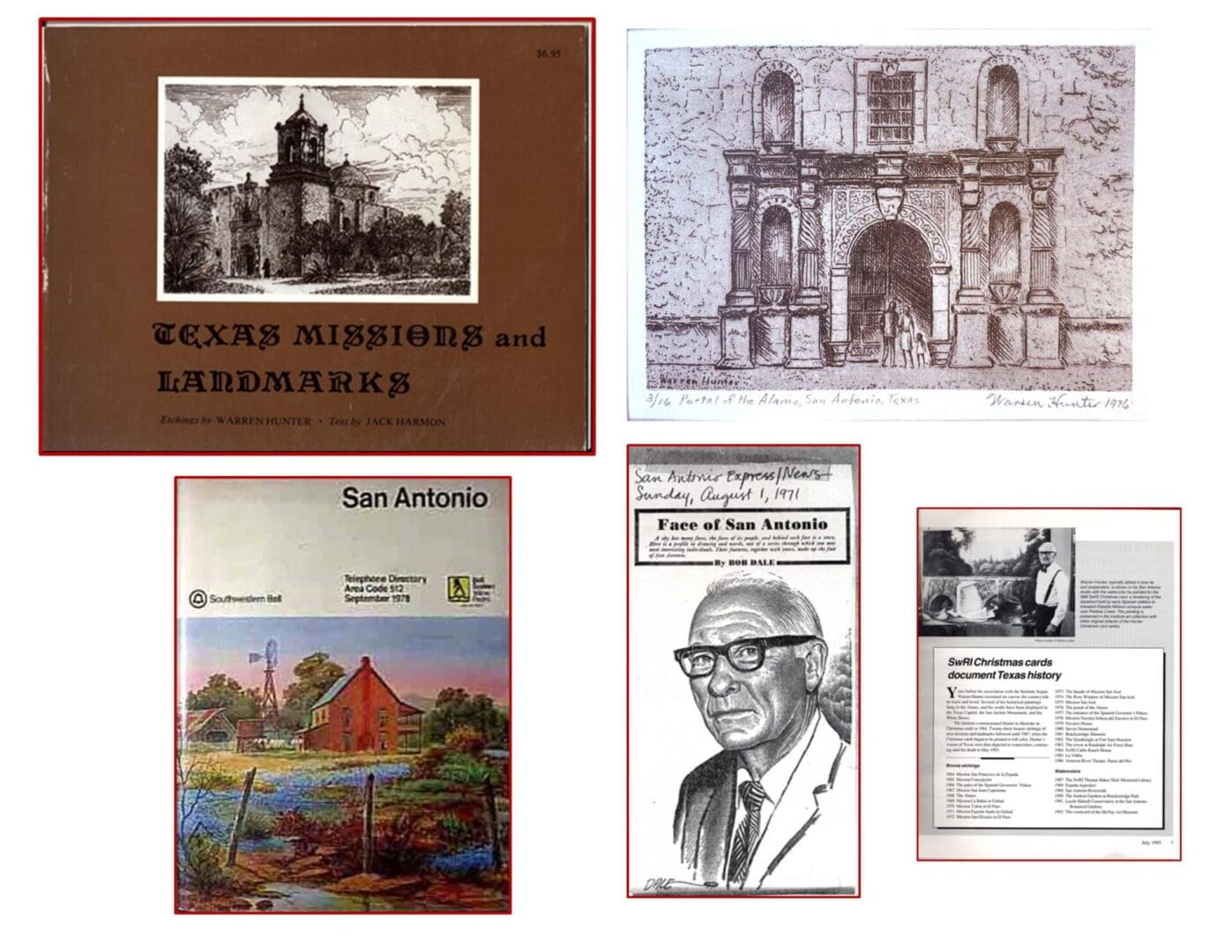
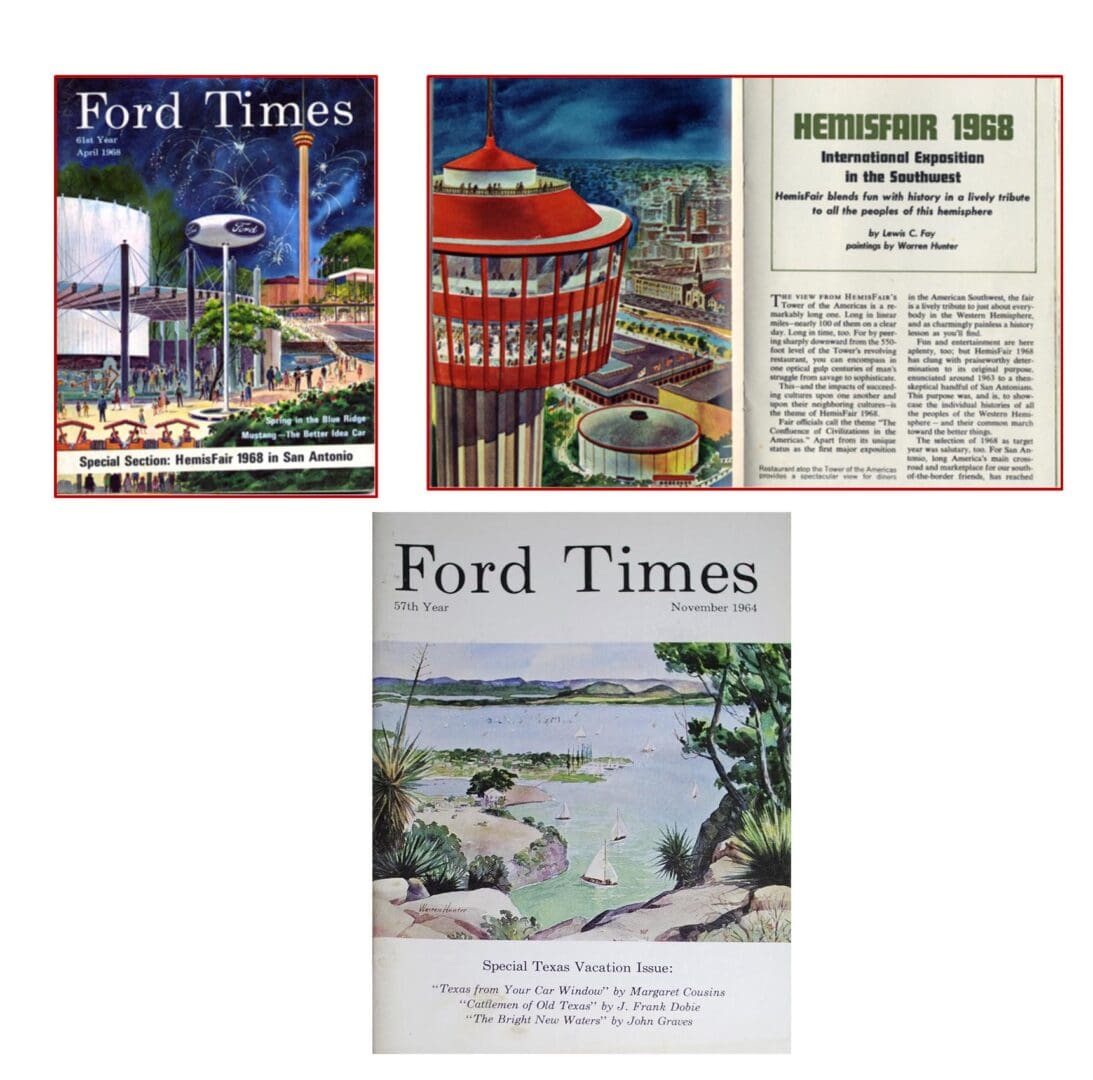
Ford Times
Warren Hunter's captivating watercolors found a wide audience through their inclusion in the Ford Times, a publication with a staggering circulation of 7.5 million. Over fifty of Hunter's paintings graced the pages of this renowned magazine, showcasing his talent to a vast and diverse readership.
Growing Up
Warren Hunter's roots trace back to his grandfather, John Warren Hunter, born in 1846 in Rogersville, Alabama. Despite minimal formal education, John's wife, Mary Ann Calhoun, empowered him to become a teacher by teaching him to read and write in the intricate Spencerian script. Eventually, John became a certified third-grade teacher in Arkansas before returning to Texas, where he embarked on a career as a frontier schoolteacher in Fredericksburg. Both he and Mary Ann worked tirelessly as educators, moving from town to town. Warren's upbringing was marked by this nomadic lifestyle of attending a different school almost every year. The tradition of education and publishing continued in the family, with Warren's father, J. Marvin, founding the “Frontier Times” magazine and later establishing the Frontier Times Museum in Bandera, Texas. Warren himself contributed to the family legacy by creating many of the magazine's covers, showcasing his artistic talents from a young age.
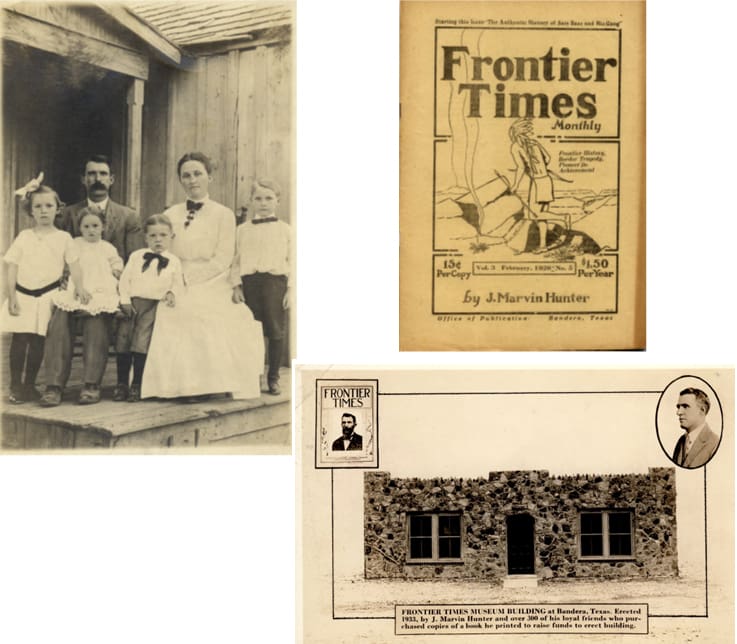
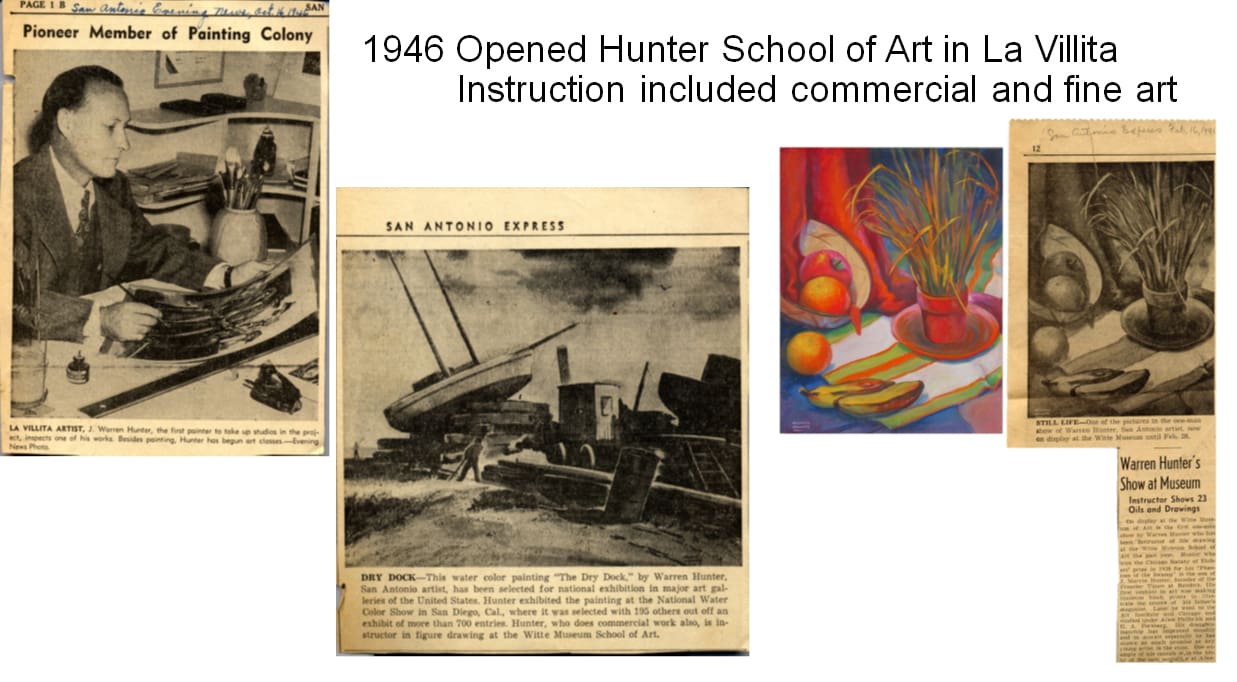
La Villita
In 1946, Warren Hunter returned to his native Texas and established the Hunter School of Art in the historic La Villita district of San Antonio. With just six initial students, Hunter's school offered comprehensive commercial and fine art instruction. Notably, many of his earliest pupils achieved significant success in their artistic careers, including the renowned fashion illustrator Celine Fielden, who later became his wife. While teaching at the San Antonio Art Institute during the day, Hunter's administrative duties as Dean proved challenging, often detracting from his passion for painting. Seeking more creative freedom, he relocated the school to 810 Brooklyn Street in San Antonio, expanding its offerings to include daytime classes. Initially focusing on a robust commercial art program, Hunter later streamlined the curriculum to prioritize drawing and painting due to increasing state regulations.
His Legacy
Warren Hunter's artistic legacy resonates through a rich tapestry of works that vividly portray the essence of Texas. Spanning a spectrum of mediums, from woodblock prints to oil paintings, he captured the state's essence with remarkable depth and authenticity. As a versatile artist and educator, Hunter's influence extended beyond his own creations. Serving as the inaugural dean of the San Antonio Art Institute and founding his esteemed art school, he nurtured generations of Texas artists, shaping the region's artistic landscape. Hunter's artworks adorn prestigious institutions such as the Alamo and the San Jacinto Monument. At the same time, his presence extends to national and international arenas, with pieces housed in esteemed collections, including the Smithsonian Institution and the White House. Warren Hunter's extraordinary dedication to artistry and education ensures his lasting impact, leaving behind a cherished legacy of artistic excellence and a profound appreciation for the beauty of Texas.
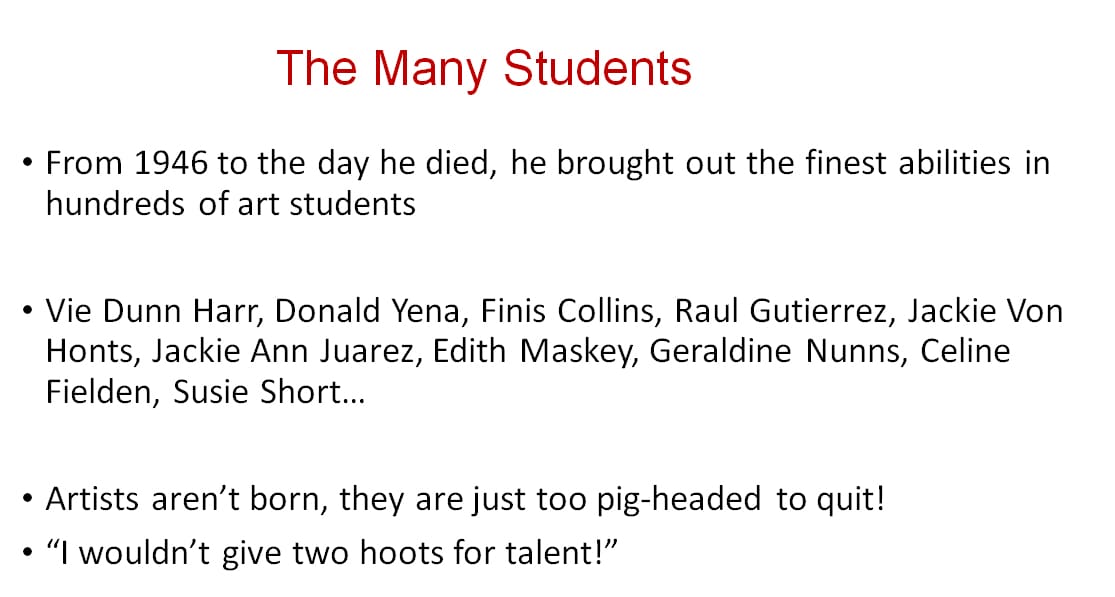
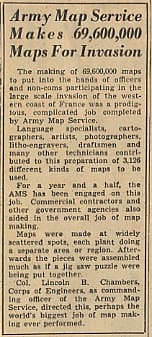
Mapmaker
During World War II, Warren Hunter's expertise in cartography became a vital asset to the U.S. Army Corps of Engineers stationed at Fort Sam Houston in San Antonio. As a civilian cartographer, he meticulously crafted maps crucial for military operations. Hunter's proficiency soon led to a transfer to the Army's Map Service, where he assumed leadership of the labeling and scaling section. In 1943, Hunter's talents took him to Washington, D.C., where he joined the World Map Indices Section. Recognized for his exceptional skills, he was swiftly promoted to serve as a liaison officer between San Antonio and the map headquarters in the nation's capital. During the war's conclusion, Hunter's duties shifted once more as he was transferred to the U.S. Office of Strategic Services (OSS), a clandestine organization preceding the CIA. His experiences with the OSS left a lasting impact, as Hunter later recounted enduring nightmares throughout his tenure with the secretive agency.
The Newspaper Business
In 1928, Warren and Lora embarked on a new chapter in Harper, Texas, where they established the Harper Herald with the assistance of Warren's father. Lora expertly operated the linotype machine in the bustling newspaper office, while Warren juggled numerous tasks, showcasing his versatility and dedication. Their hard work paid off in 1929 when the Harper Herald made history by sweeping three prestigious awards from the Texas Press Association, a feat unprecedented in its annals. Despite the challenges of meeting weekly deadlines, Warren's editorial prowess shone through, earning the paper recognition in national contests. However, Warren's ambition beckoned him beyond the confines of the printing press. Determined to pursue his passion for art, he boldly decided to uproot his family and journey to Chicago to attend the renowned Chicago Art Institute. He left behind a thriving newspaper business in the capable hands of the Dietels of Fredericksburg.
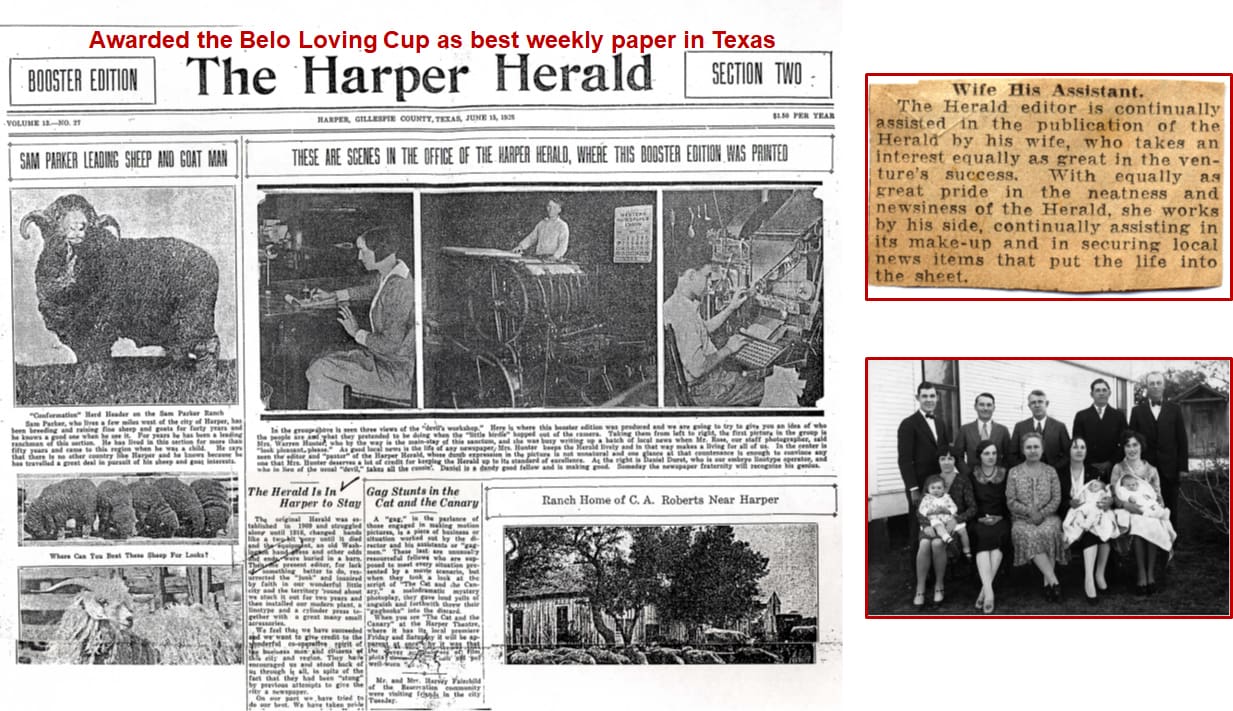
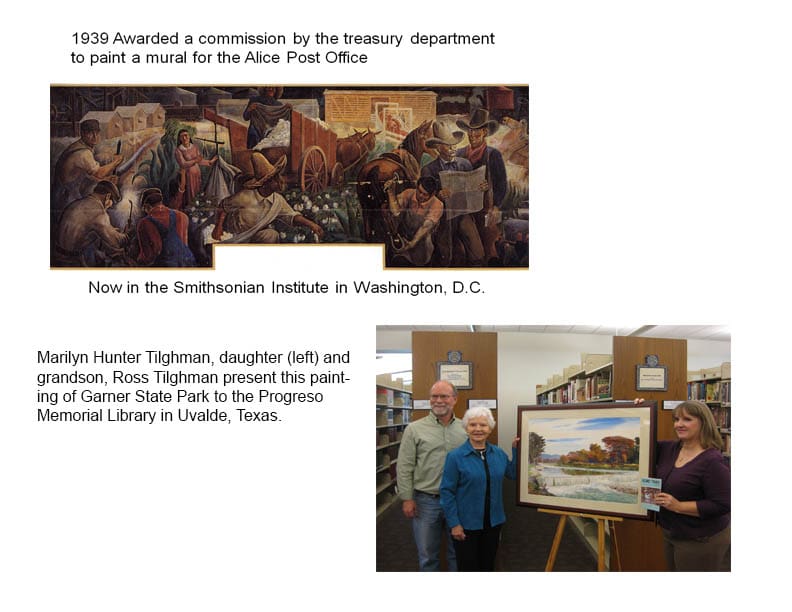
Works in Public Collections
- Smithsonian American Art Collection: "South Texas Panorama" (1939), an evocative oil on canvas displayed initially in the Alice Post Office in Texas, now holds a prestigious place in the Smithsonian's collection.
- Pioneer Memorial Hall Museum: Hunter's captivating oil on canvas graces the halls of this museum, preserving his artistic legacy for future generations.
- San Jacinto Museum:
- Joseph Lawrence: An oil on canvas portrait immortalizes Lawrence, a valiant William W. Hill's Company member during the Battle of San Jacinto.
- Jeff Hamilton (1937): Hunter's skillful portrayal of Hamilton, seated and captured in oil on canvas, captures a moment of historical significance.
- Alamo Mission:
- Jacob C. Darst (1942): Hunter's oil on canvas depiction preserves the likeness of Darst, a figure intertwined with the Alamo's history.
- Tapley Holland (1947): Another oil on canvas masterpiece by Hunter, capturing Holland's essence within the storied walls of the Alamo.
- John W. Smith (1948): Smith's likeness, rendered in oil on canvas by Hunter, adds to the rich tapestry of Alamo Mission history.
- White House Collection: A South Texas landscape, delicately rendered in watercolor by Hunter, graced the halls of the White House during the Franklin D. Roosevelt administration.
- Texas A & M University: Hunter's artistic prowess is celebrated at Texas A & M University, where a Texas landscape painting inspired by an old annual photograph captivates viewers.
- Witte Museum: A Texas landscape, curated within the Witte Museum's collection, serves as a testament to Hunter's ability to capture the natural beauty of the Lone Star State.
His Style and Technique
As Warren Hunter's career progressed, his painting style evolved, characterized by refined details and vibrant colors that brought his subjects to life. Hunter favored a modest palette of Winsor & Newton paints in his watercolor works, including cadmium lemon, vermillion, alizarin crimson, French ultramarine, Prussian blue, and burnt sienna. With these six hues, he conjured mesmerizing characters and scenes, showcasing his mastery of the medium. Hunter was a staunch advocate of using the old hog bristle cutter brush for watercolors, achieving distinctive textures and effects. Hunter employed a similar palette in his oil paintings, but with slight variations. For instance, cadmium red light replaced vermillion for the orange tone, and cadmium yellow light substituted cadmium lemon for a richer yellow hue. Hunter's distinctive use of Prussian blue in oils set his works apart, a rarity among painters. He preferred Shiva oil paints and exclusively utilized refined linseed oil, as his medium, ensuring consistency and depth in his compositions. Hunter's canvas was always linen, providing a sturdy foundation for his artistic endeavors. He applied spray-on retouch varnish and a final varnish to enhance and protect his oil paintings, preserving their brilliance for generations to come. Hunter meticulously selected his tools, favoring Winsor & Newton Series 7 brushes for watercolors and Grumbacher china bristle filberts for oils. He employed sable brushes for glazing, expertly thinned with linseed oil to achieve subtle layers and transitions in his oil paintings. Through his meticulous attention to technique and choice of materials, Warren Hunter brought forth a body of work distinguished by its beauty, depth, and enduring quality.
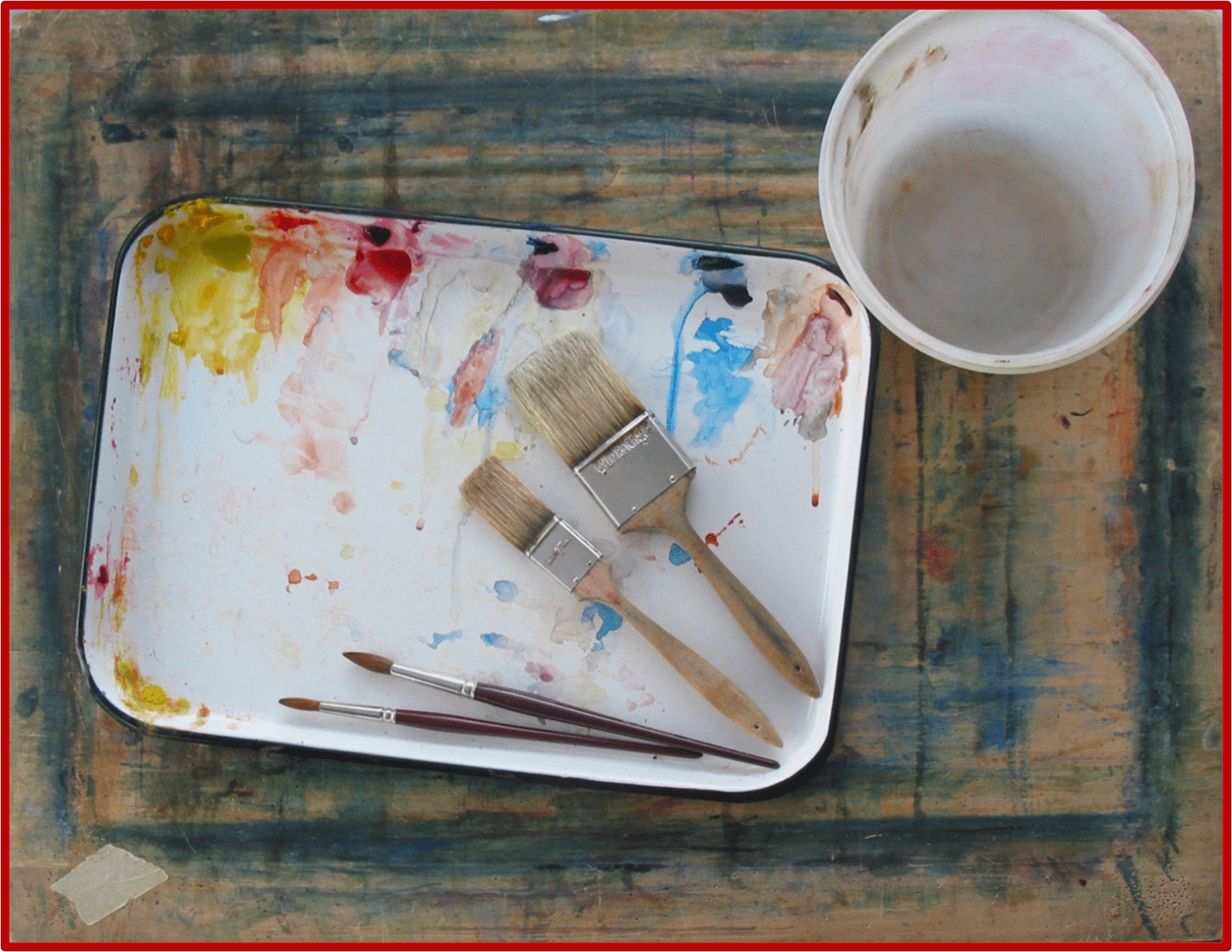

Get in Touch
Interested in learning more about Warren Hunter's techniques and artwork? Reach out today to explore his legacy further and discover how his art continues to inspire.
